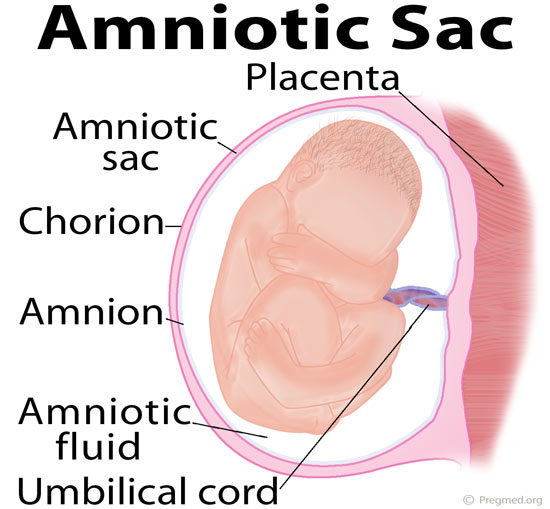On this page
Who is this information aimed at?
This leaflet is aimed at pregnant women with a finding of oligohydramnios on ultrasound examination. The leaflet should only be given in consultation with a senior obstetrician / fetal medicine specialist. This leaflet also applies to women who have absent amniotic fluid (anhydramnios.)
What does oligohydramnios mean?
Oligohydramnios is diagnosed when the amount of amniotic fluid (also referred to as liquor) surrounding your baby is lower than the expected normal range. If there is no measurable amniotic fluid around your baby, this is referred to as anhydramnios. Oligohydramnios and anhydramnios can only be diagnosed following an ultrasound scan.
What is amniotic fluid and what does it do?

During your pregnancy, the baby is cushioned inside a fluid-filled bag (amniotic sac). The wall of the amniotic sac is made up of two membranes which keep your baby safely sealed in the bag of amniotic fluid. These membranes usually break open before or during labour, which is commonly referred to as your “waters breaking”.
Amniotic fluid works in many ways to help your baby develop throughout your pregnancy. It:
- Protects your baby
- Helps your baby’s lungs, digestive system, muscles and bones to develop.
- Protects your baby against infection.
What is a normal level of amniotic fluid?
The range of normal amniotic fluid changes a little depending on the stage of pregnancy. Your sonographer or doctor will measure an estimated amount of amniotic fluid in your uterus by measuring the depth of fluid during the ultrasound scan. If any area has less than 2 cm this is considered lower than normal.
Why has this happened?
There are several possible causes of oligohydramnios at an early point in pregnancy (less than 24 weeks):
- A problem with your baby’s urinary tract, meaning the production or flow of urine is inhibited.
- Ruptured membranes (your “waters breaking”).
- A problem with the function of the placenta.
- An infection in the baby, which have been transmitted through the placenta, such as cytomegalovirus (CMV).
What does it mean for the pregnancy?
Your doctor will explain the possible implications for your baby. This depends on a number of factors, including the possible underlying cause, the degree of oligohydramnios and the gestation that it is first identified. A finding of oligohydramnios late in pregnancy is unlikely to be significant for your baby.
However, significantly reduced or absent amniotic fluid from less than 24 weeks gestation unfortunately may mean that the baby’s lungs will not develop effectively and the baby’s limbs and joints may not move well after delivery. Sadly, some of these babies will not survive.
If your amniotic fluid level is low because your waters break before 24 weeks gestation there is also a risk of miscarriage and of developing an infection.
If a significant kidney abnormality is present this will also be concerning for the long term outlook for your baby. Your fetal medicine doctor will discuss this with you in more detail.
For further information
For further information please contact:
Fetal Medicine Department,
Royal Victoria Infirmary
(0191) 2825837
Monday –Friday 9-5pm
Be sure to ask questions to the doctor supplying you with this leaflet and make a note of any questions you would like to ask at your next Fetal Medicine Unit appointment.
Antenatal Results and Choices
0845 077 2290 or 0207 713 7486 via mobile
North of Tyne Patient Advice and Liaison Service (PALS)
0800 0320202
Monday to Friday 9.00-4.30pm (answer phone out of hours)
Email: [email protected]
Resource Information
Information produced by Lesley Walker (Fetal Medicine Clinical Lead)
Date July 2019
Updated by Angela Lightfoot: 21/07/2023
Review date: 21/07/2026